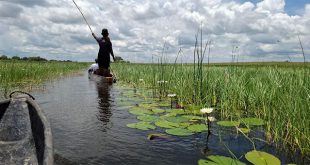What kinds of incentives, in your view, are necessary to convince private landowners to keep their forest land intact?
For private land owners to keep their forests or trees in their land intact there must be some requirement for them to do so and someone must be willing to compensate them for keeping these forests intact. We could ask, what would stop a private forest owner in Kalangala Islands from converting it to oil palm production or one from Busoga from converting such a forest to sugarcane growing? To decide the incentive required, the logic for any rational person is simple, the incentive must be equal or greater than the befits derived from converting to other land use.
So how do you incentivize these private forest owners?
We know that forests/trees provide public goods and services; therefore, someone acting in public interest must be paid for these. For most people, the incentive needs to be monetary. First, the government needs to establish an arrangement to accumulate that incentive; for example, through a trust fund and then look at the conditions for its disbursement. We must also make registration of private forests a less demanding endeavour for the private forest owners. In some cases, the financial incentive may be low but such forest owners receive other kinds of recognition like certificates, medals, etc. These mainly work for well-to-do forest owners who value recognition but may fail to work for the rural poor. Other incentives could be supporting the private forest owners to integrate other eco-friendly income generating activities in to these forests such as bee keeping or eco-tourism.
Some Ugandans are against the idea of the government’s recent request to Parliament to borrow about Shs 285bn from the World Bank to restore the country’s fast disappearing forests. What is your take on this issue?
Governments will always borrow to undertake projects or programmes that are considered vital for the country. Perhaps it now shows the government’s realisation of the problems related to loss of forests and land degradation and the resolve to address them in a more ambitious way. However, even if borrowing allows us to launch the ambition, we need to mobilise additional resources internally which will allow the country to undertake a long-term coordinated approach to achieve the required targets in forest restoration. Uganda also needs to look internally for resources by looking at sources like the “environmental levy” and others to generate a tree growing fund which is already provided for under the National Forestry and Tree Growing Act but has never been activated.
Your last word?
We need to empower the district forestry services and provide a coordination mechanism for NGOs and other actors in tree growing. Development partners need to commit to long-term investment in tree growing and shift from short-lived projects to multi-year programmes similar to the approach with SPGS but this time focusing on the wider community.
*****
 The Independent Uganda: You get the Truth we Pay the Price
The Independent Uganda: You get the Truth we Pay the Price





